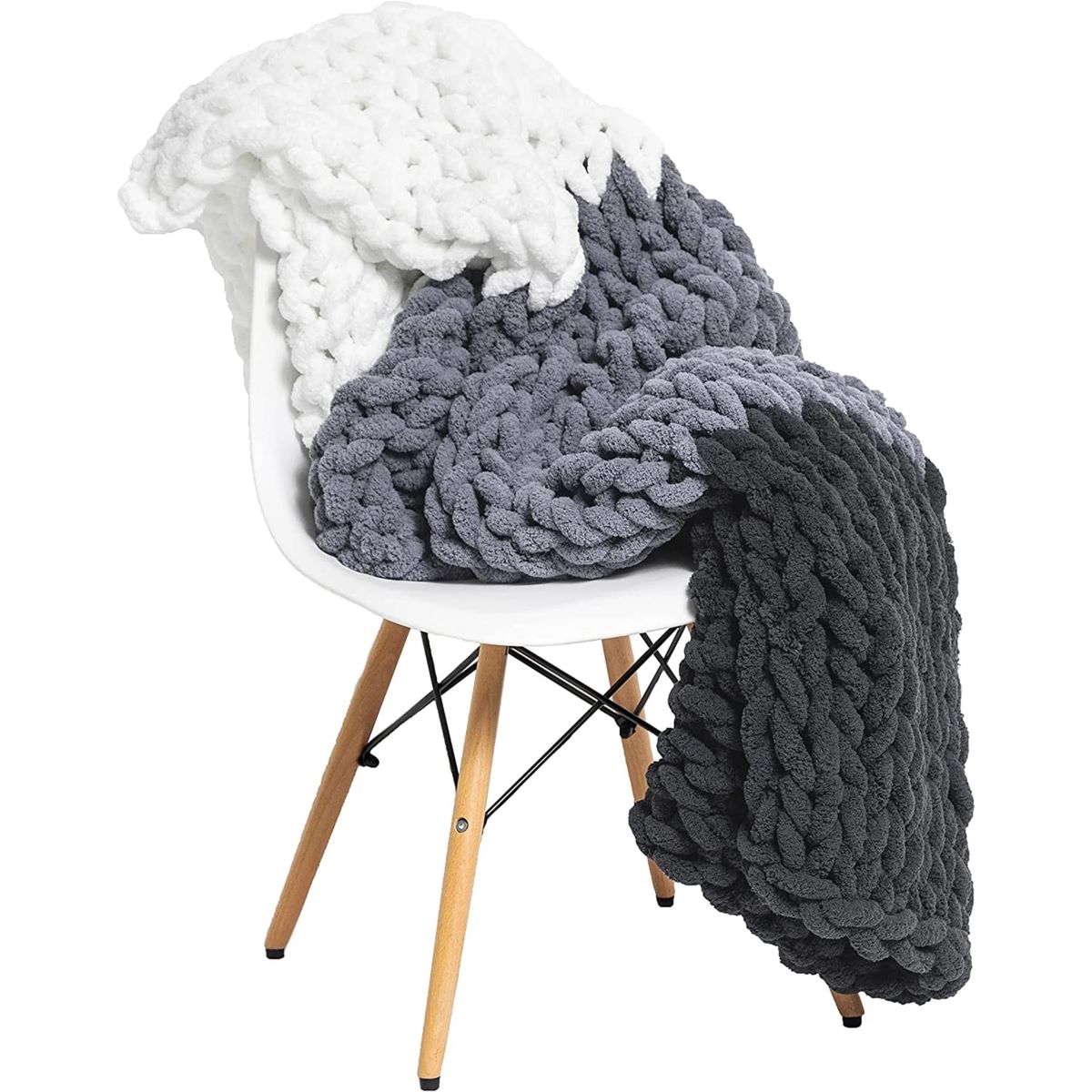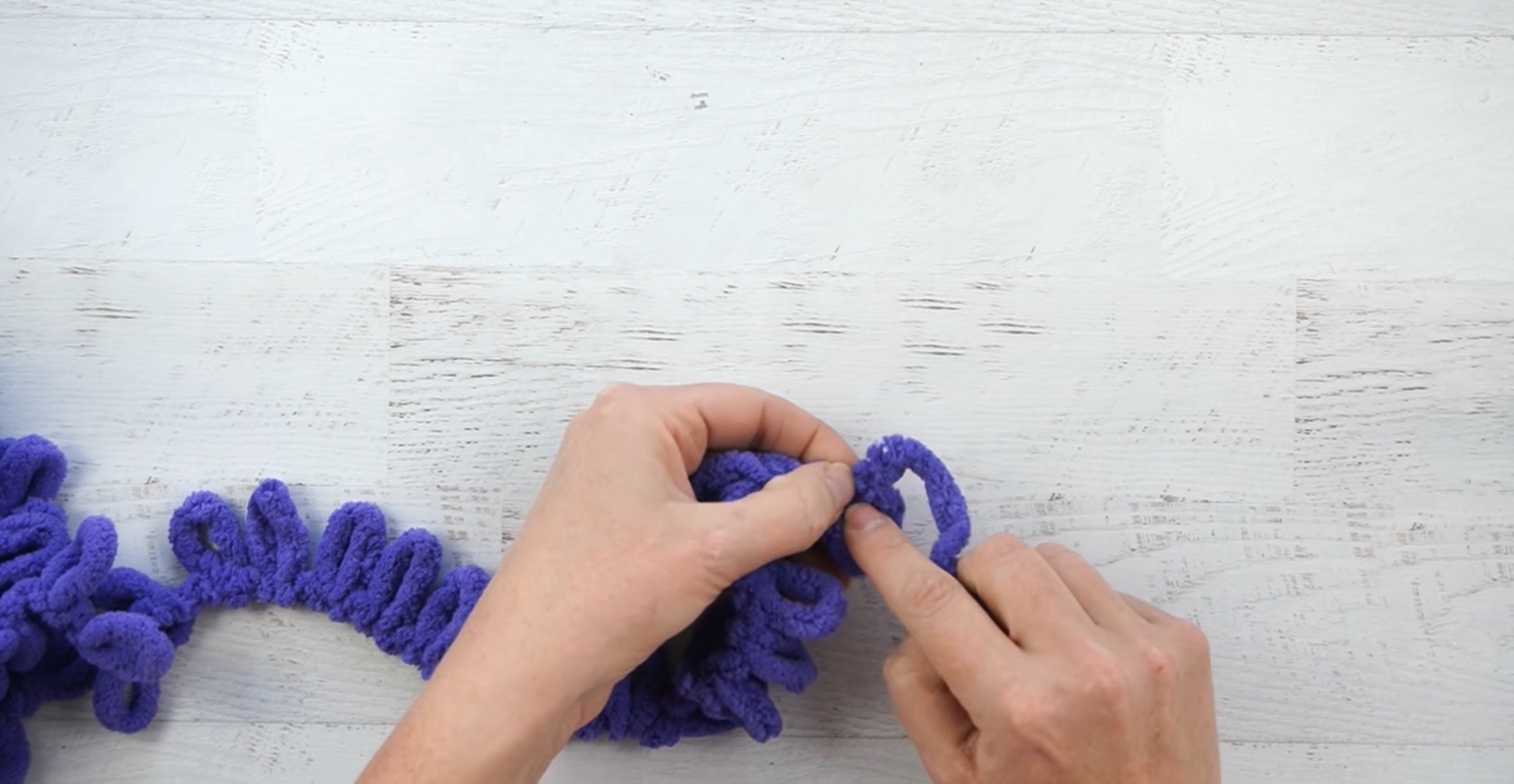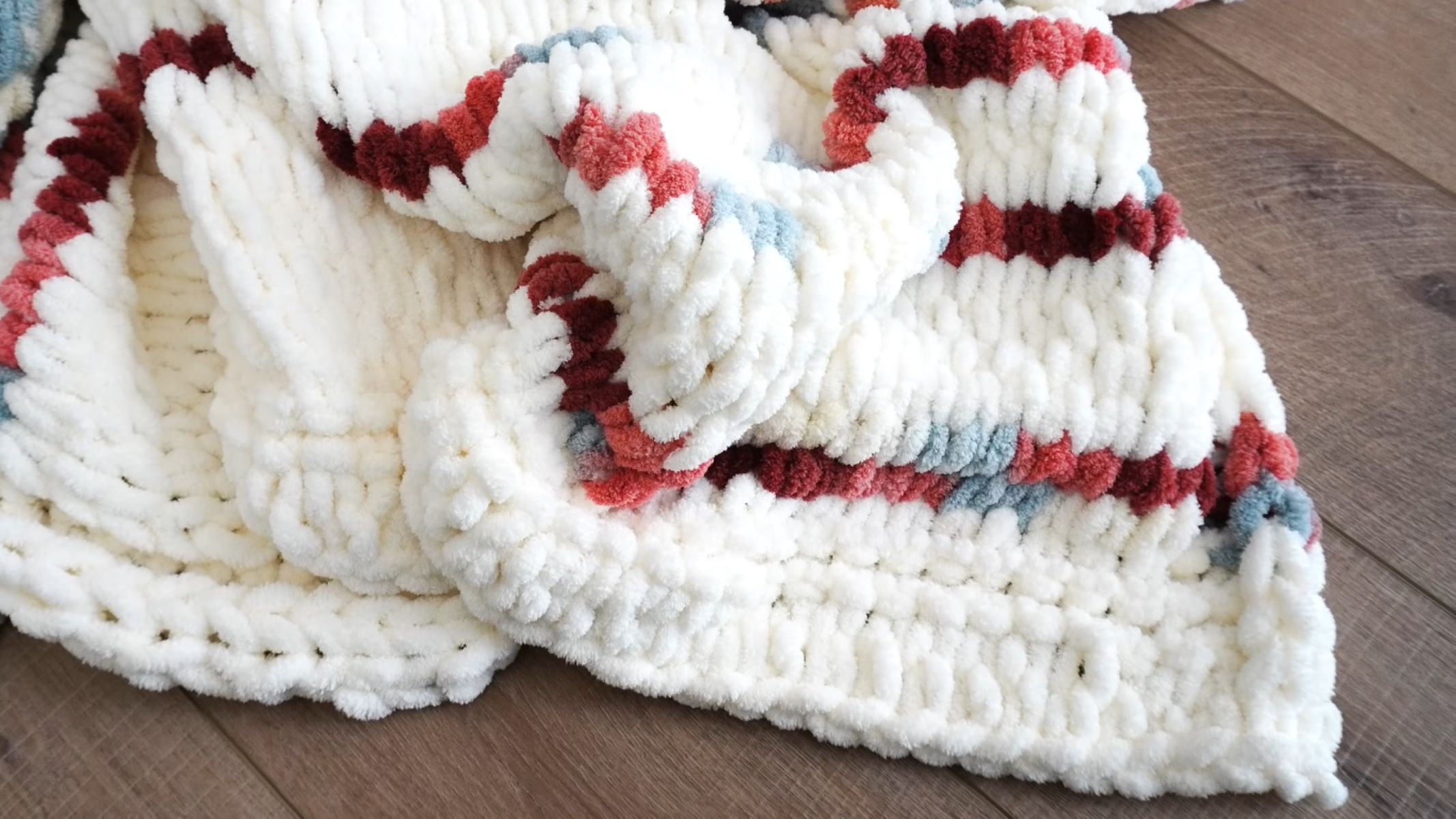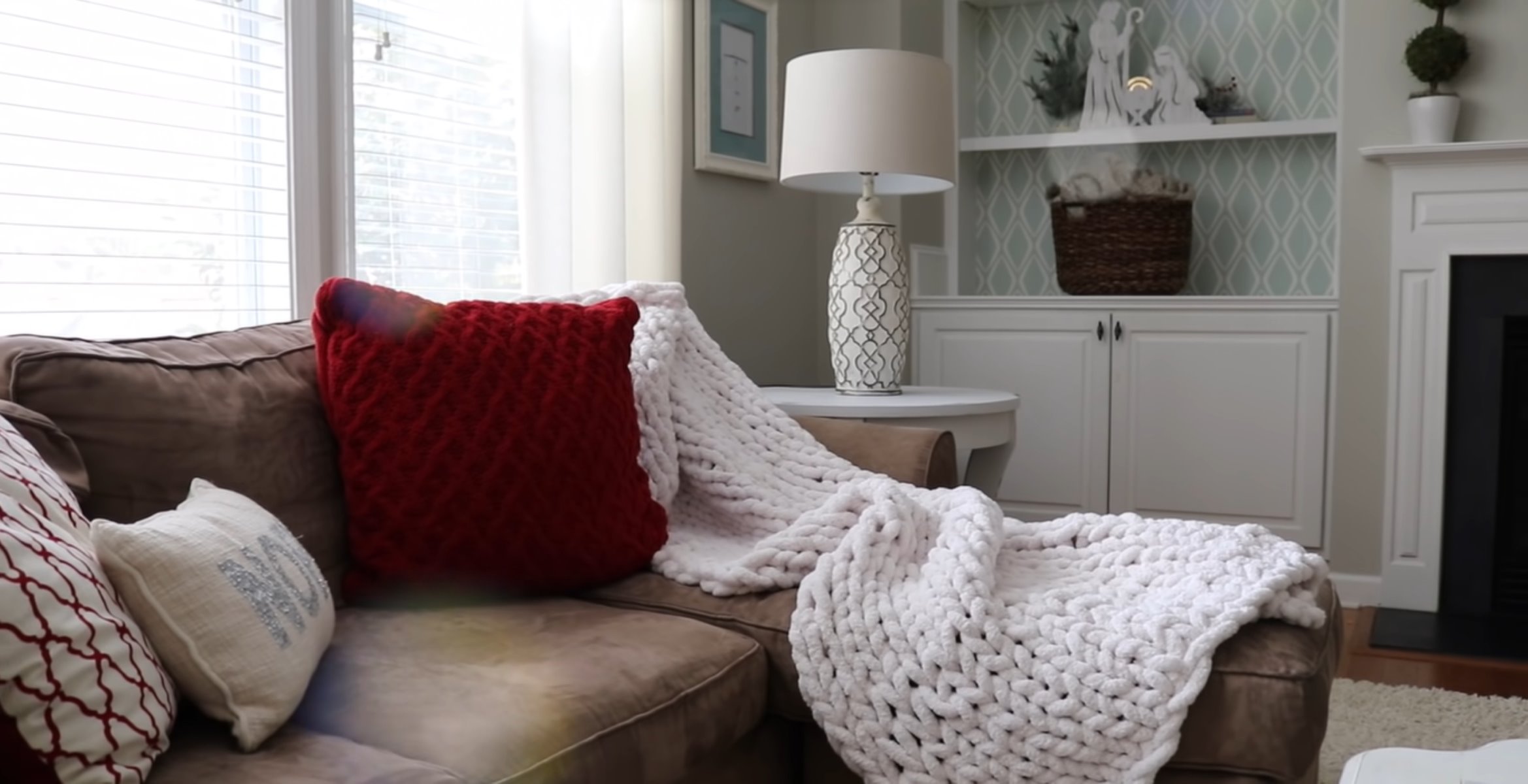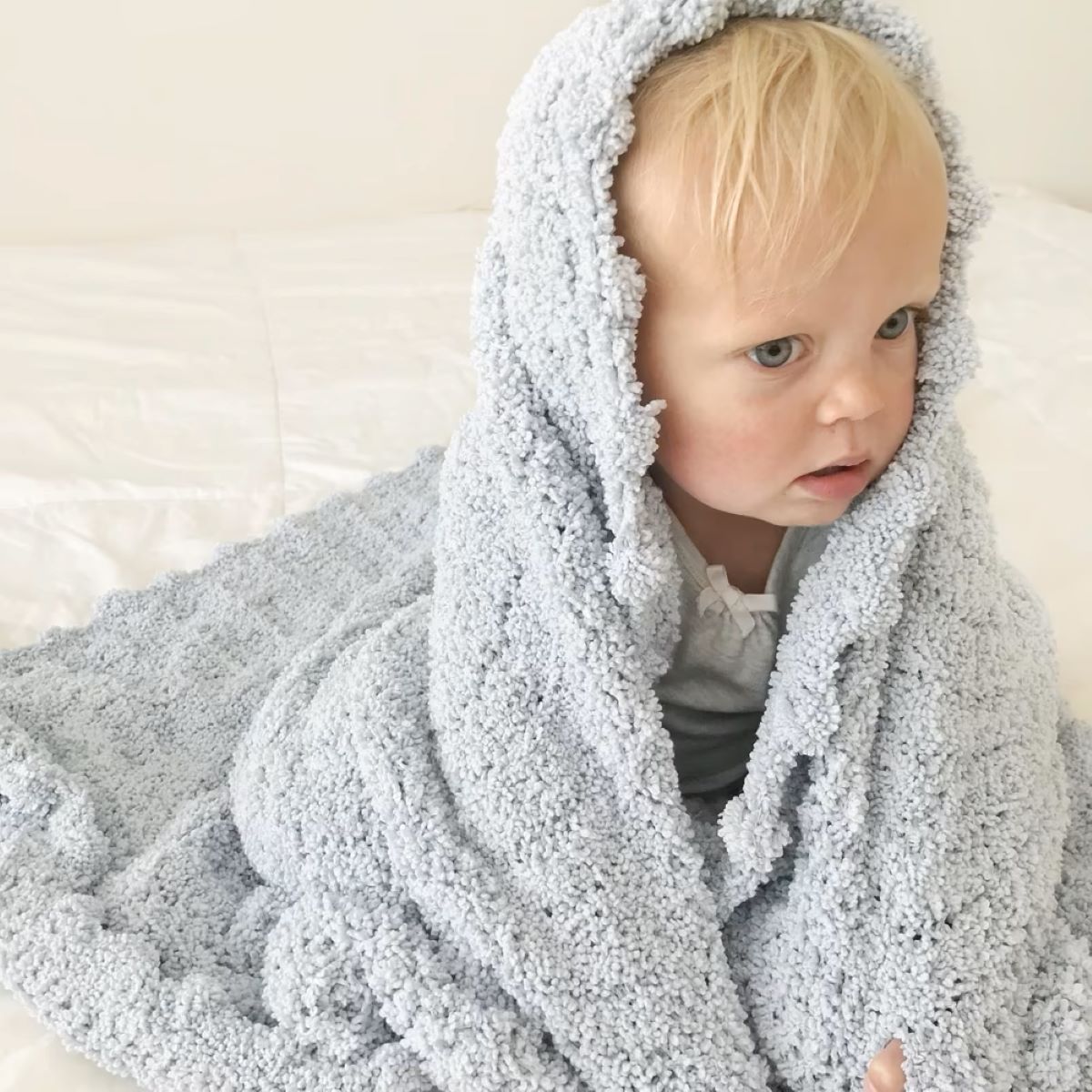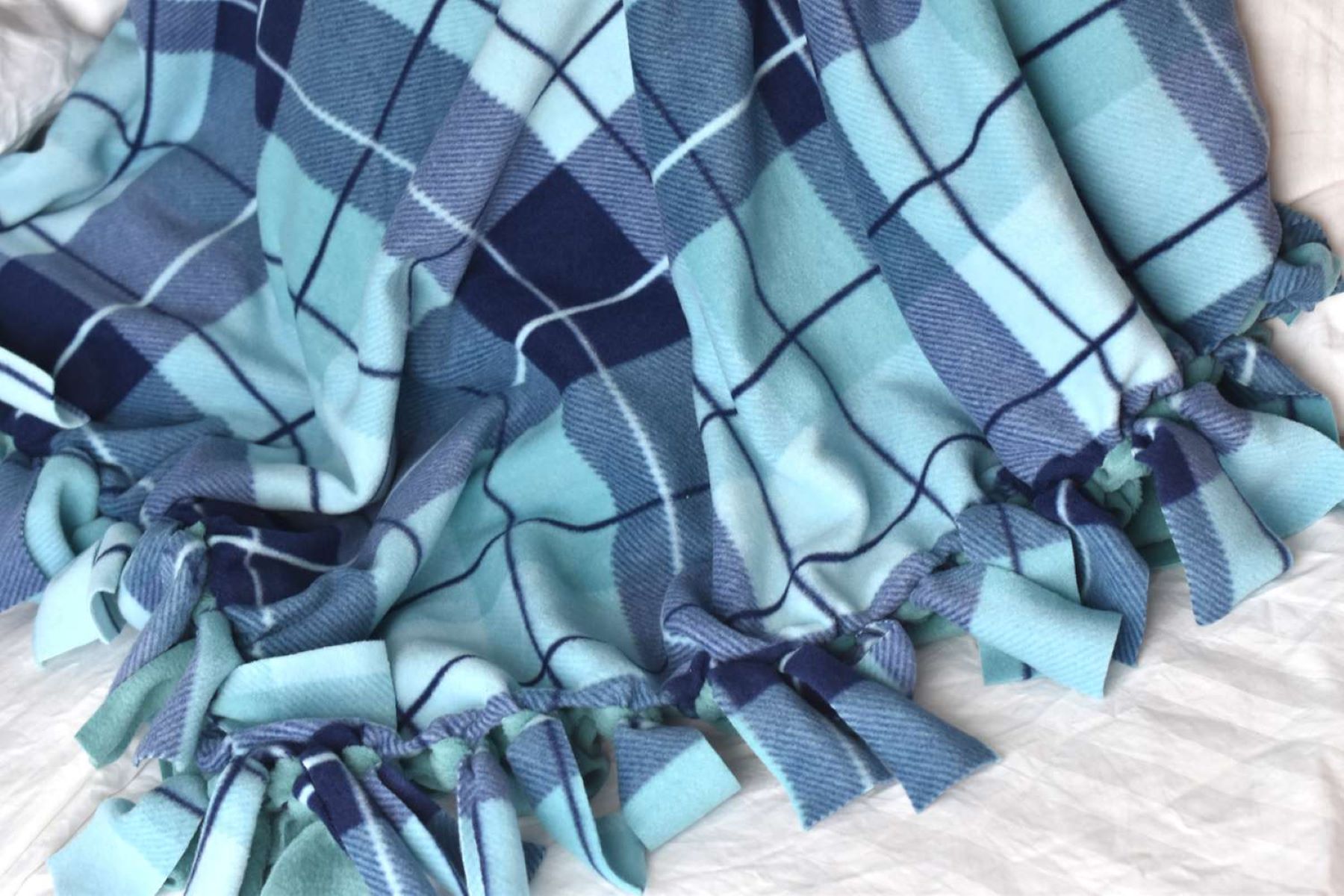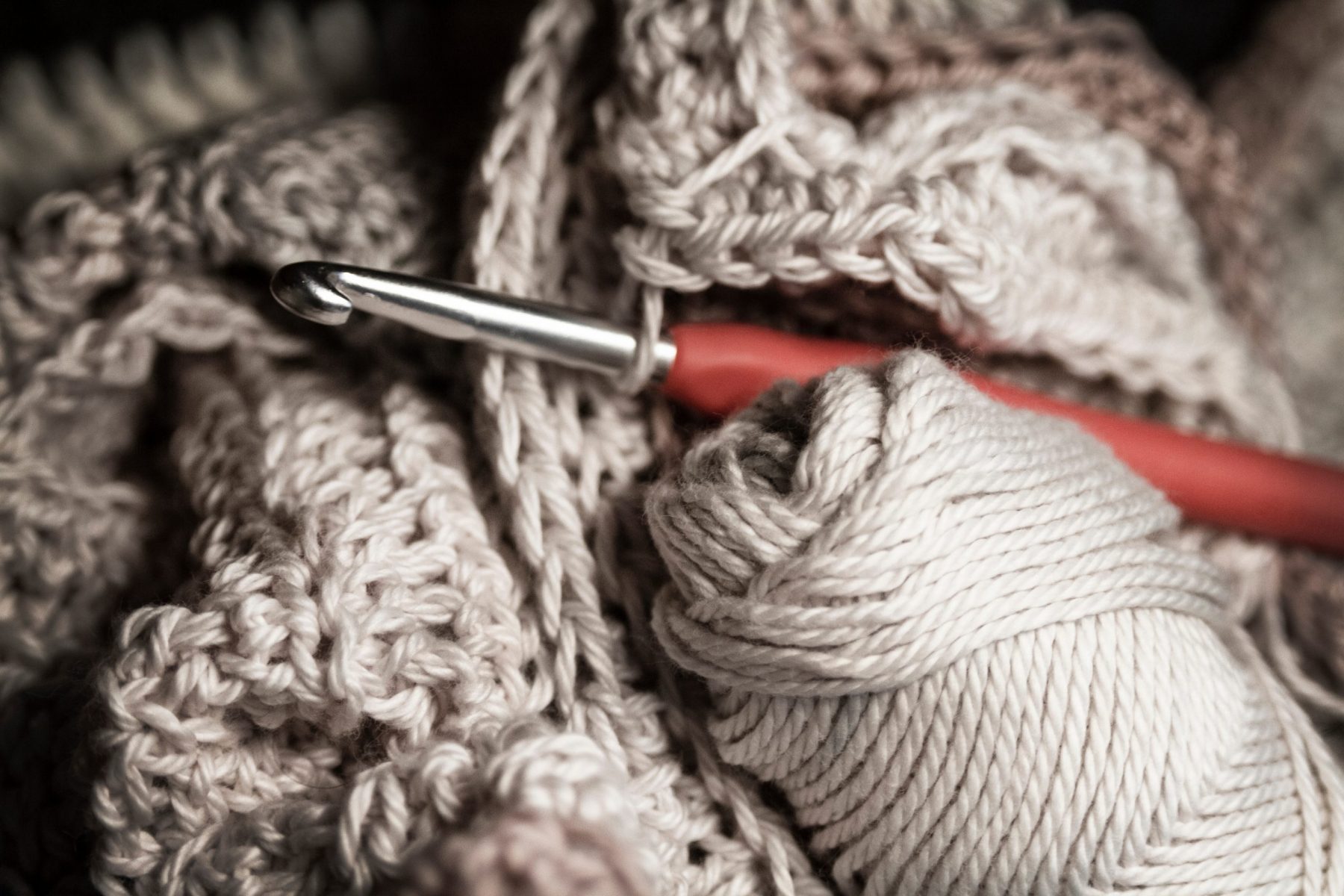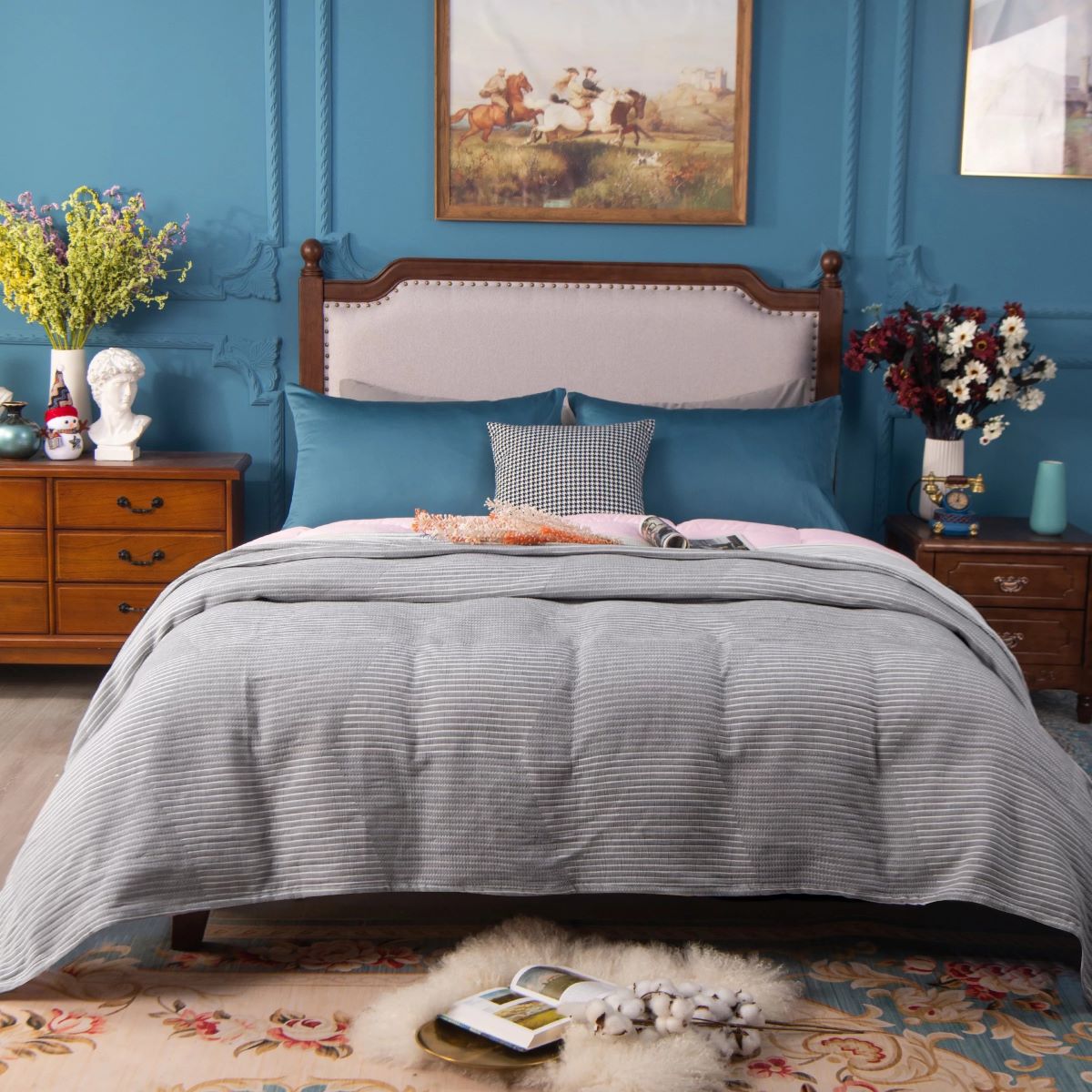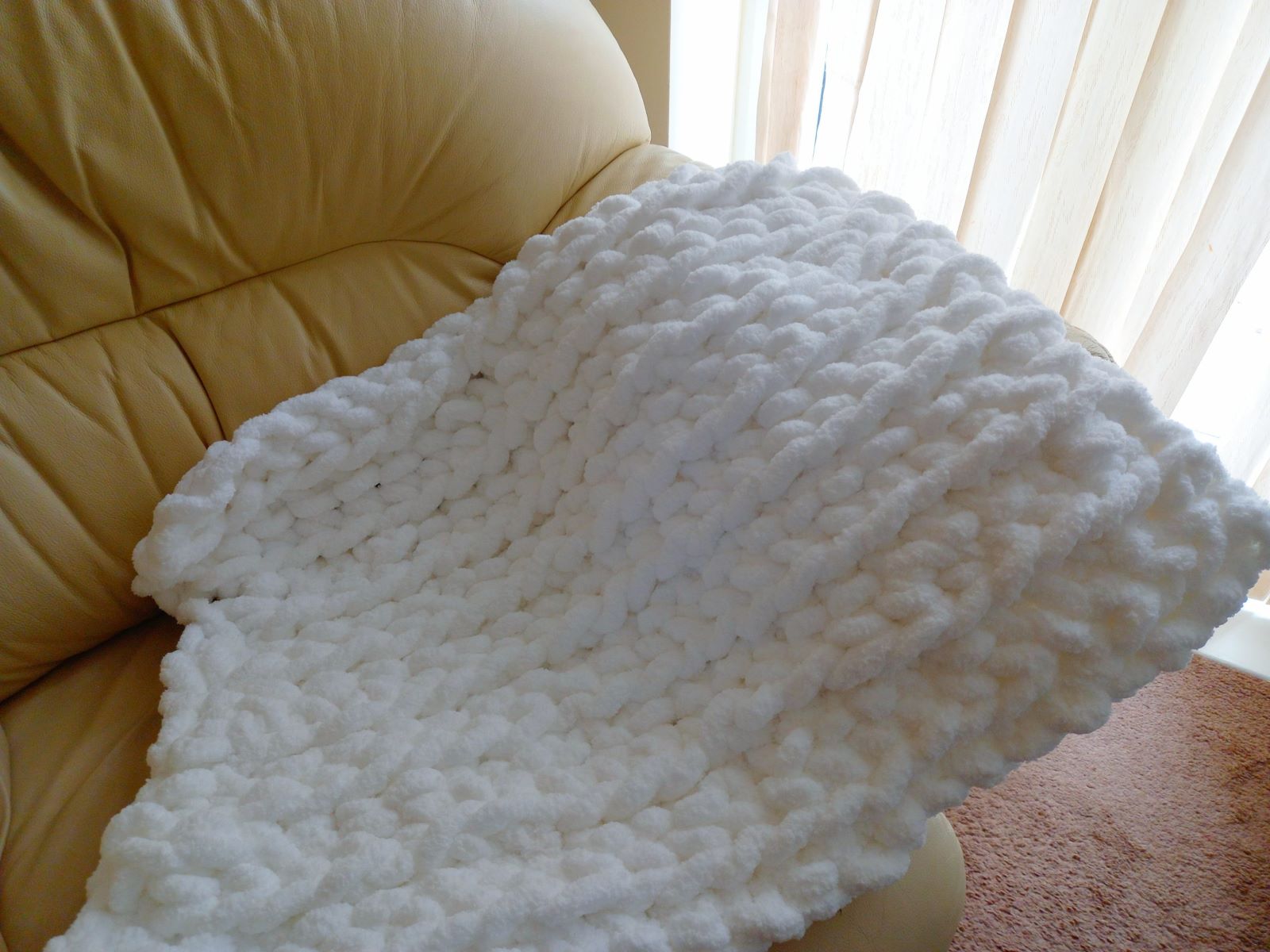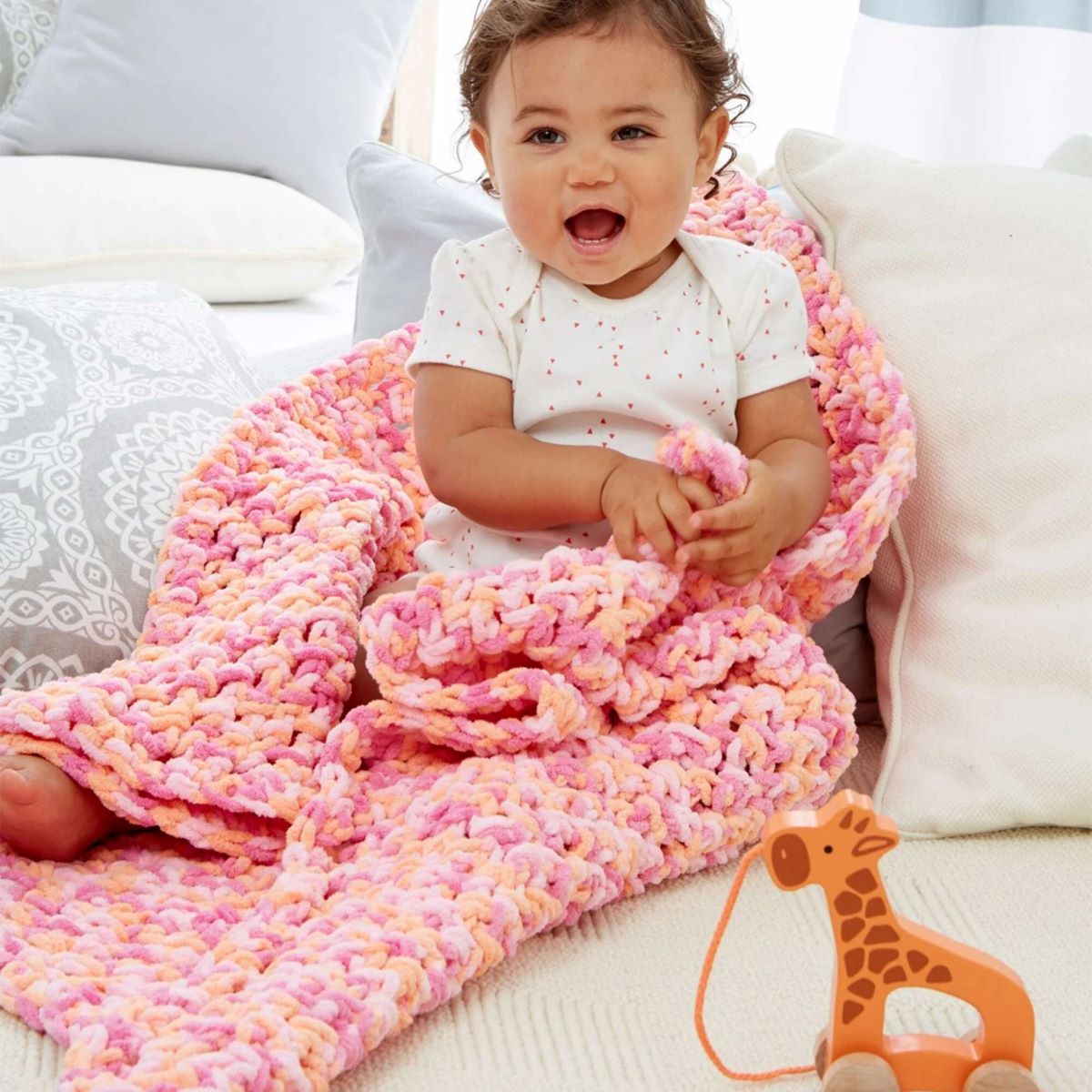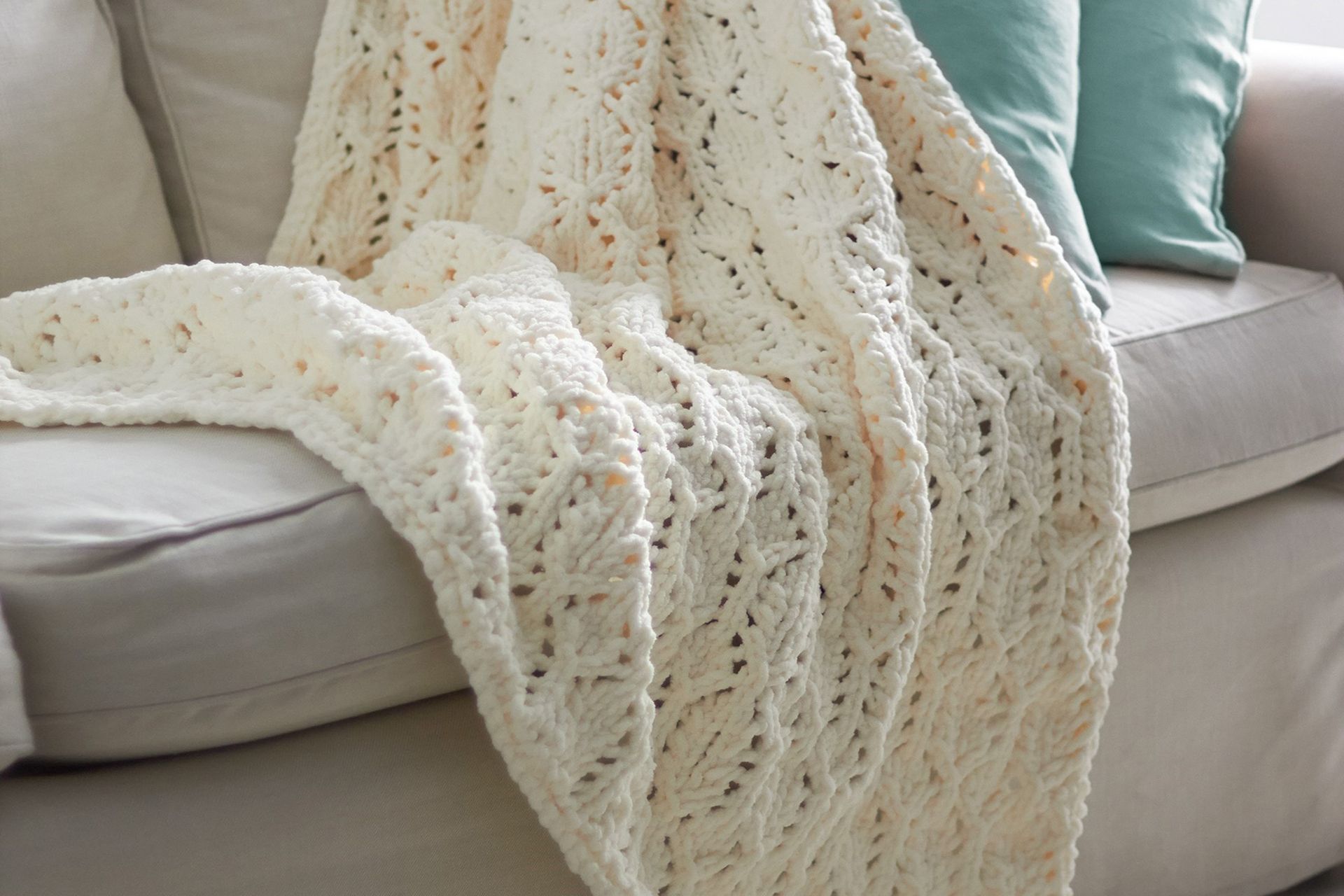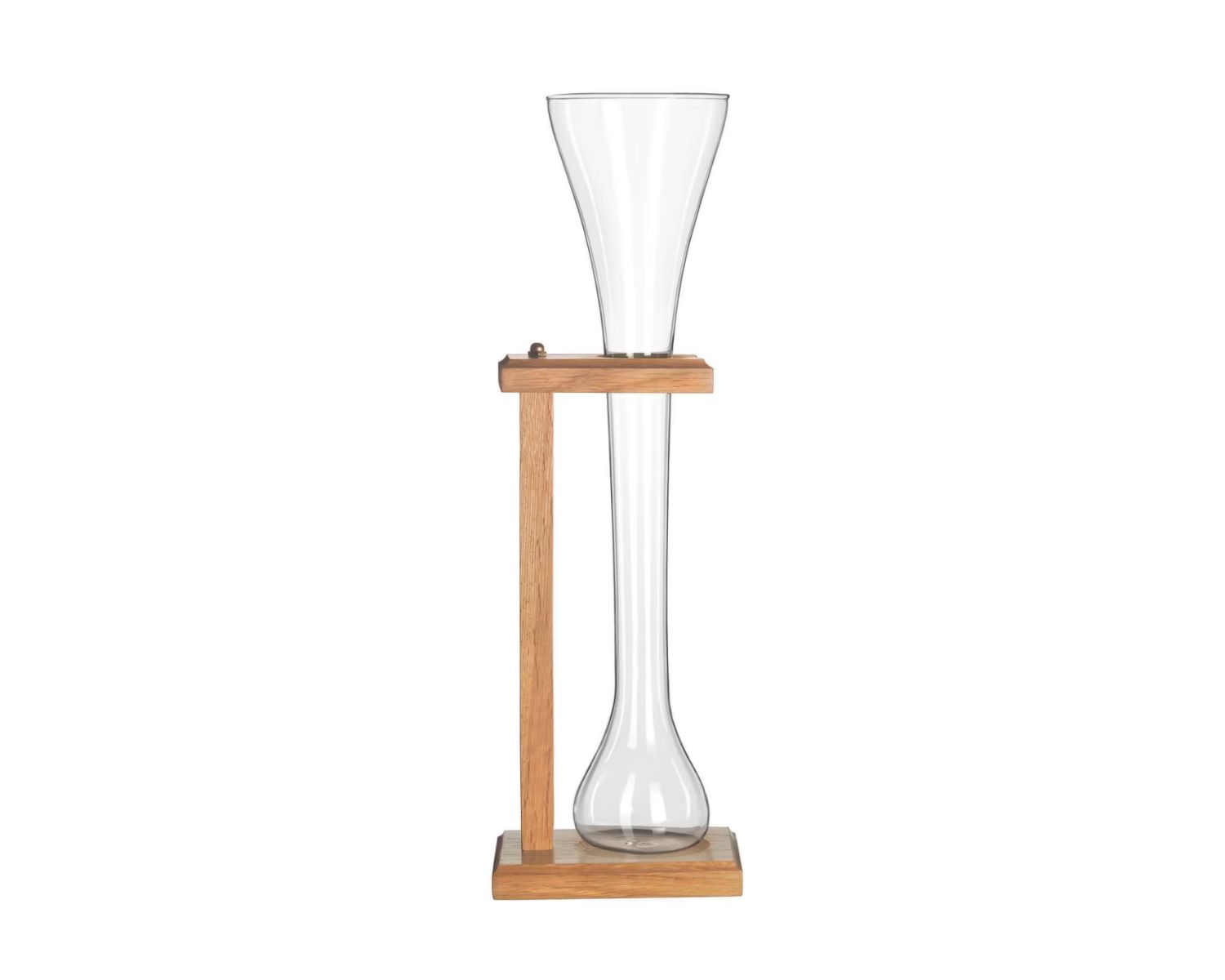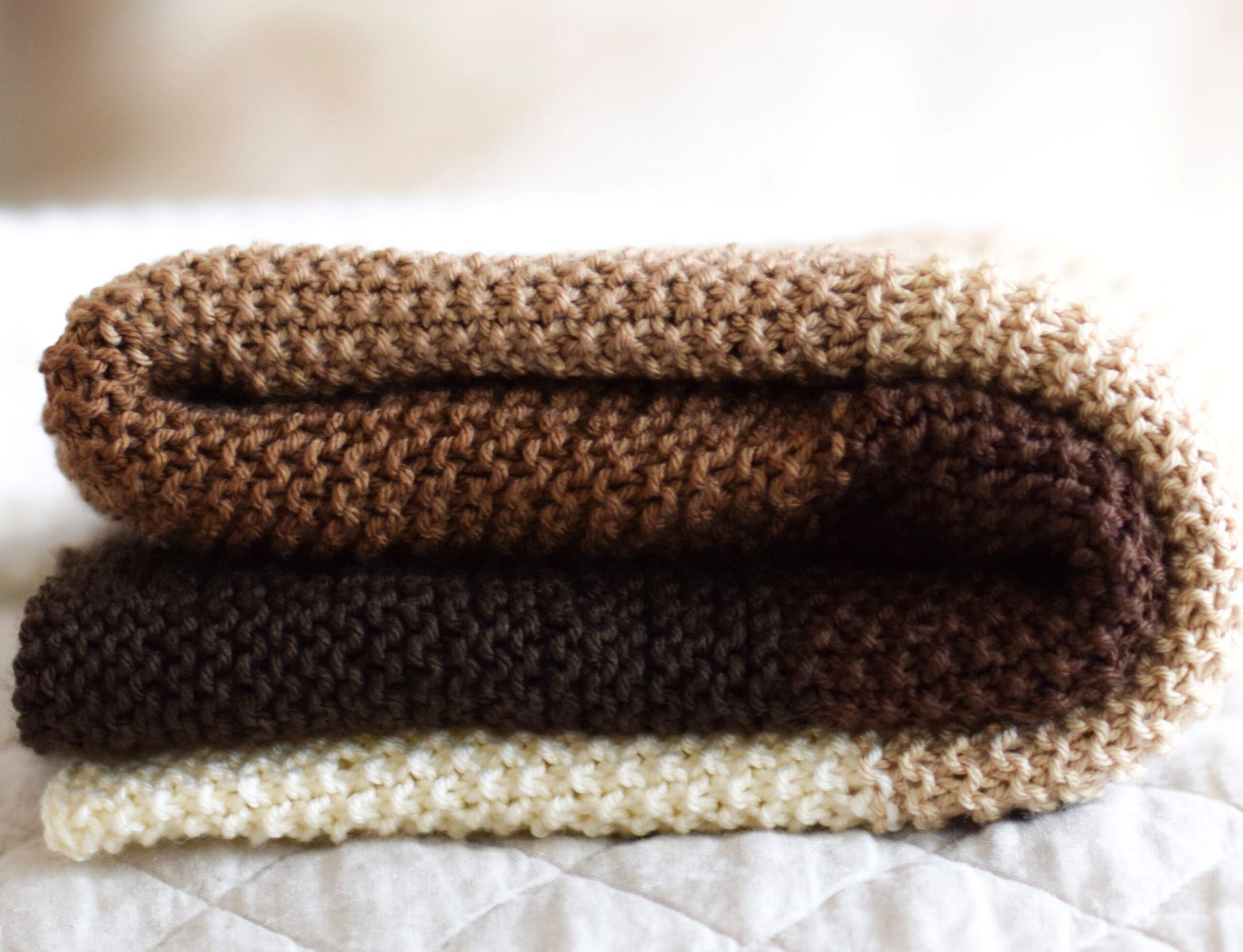

Articles
How Many Yards Of Yarn For A Blanket
Modified: December 7, 2023
Discover the perfect number of yards of yarn needed to create a cozy and beautiful blanket with our informative articles.
(Many of the links in this article redirect to a specific reviewed product. Your purchase of these products through affiliate links helps to generate commission for Storables.com, at no extra cost. Learn more)
Introduction
Welcome to the wonderful world of knitting and crocheting! If you’ve ever tried your hand at creating cozy blankets, you know that choosing the right amount of yarn is crucial for a successful project. Whether you’re a seasoned crafter or a beginner, it’s essential to understand how many yards of yarn you’ll need to create that perfect blanket.
In this article, we’ll walk you through the process of determining the yardage required for your blanket project. From selecting the yarn to calculating the yardage, we’ll cover all the essential factors to consider. By the end of this article, you’ll be confident in knowing how much yarn you need to complete your cozy masterpiece.
So, let’s dive in and unravel the secrets to calculating the perfect amount of yarn for your blanket project!
Key Takeaways:
- Ensure a successful blanket project by selecting the right yarn, determining the size, and calculating yardage. Buying extra yarn allows for flexibility and future repairs, ensuring a stress-free crafting experience.
- Consider yarn weight, stitch pattern, and design elements when calculating yardage. Buying extra yarn provides flexibility for modifications and future repairs, ensuring a smooth and enjoyable crafting process.
Read more: How Many Skeins Of Yarn For A Blanket
Selecting the Yarn
The first step in determining how many yards of yarn you’ll need for your blanket is selecting the right type of yarn. When it comes to blankets, you’ll want to choose yarn that is soft, durable, and suitable for the desired level of warmth.
There are various types of yarn available, such as acrylic, wool, cotton, and blends. Acrylic is often preferred for its affordability and machine-washable properties, making it a popular choice for blankets. Wool, on the other hand, provides excellent warmth but requires special care and is not suitable for those with wool allergies. Cotton yarn is lightweight, breathable, and ideal for warmer climates, while blends offer a combination of different properties.
Consider the intended use of the blanket when selecting the yarn. Will it be used for decorative purposes, as an extra layer on a bed, or for cuddling up on the couch? Different uses may require different yarn weights. For example, if you want a lightweight and airy blanket, you may opt for a fingering or sport weight yarn. For a heavier and warmer blanket, a worsted weight yarn would be more suitable.
Additionally, take into account the color and texture of the yarn. Do you want a solid-colored blanket or one with multiple colors? Do you prefer a smooth yarn or one with a textured look? The color and texture will not affect the yardage needed, but they play a crucial role in the overall aesthetic of the blanket.
Once you have decided on the type, weight, color, and texture of the yarn, you’re ready to move on to the next step of determining the size of your blanket.
Determining the Blanket Size
Before you can calculate the amount of yarn you’ll need, you need to determine the size of the blanket you want to make. The size will depend on your personal preference and the intended use of the blanket.
Blankets come in various sizes, from small lap blankets to large bed-sized blankets. Consider who the blanket is for and where it will be used. For example, a baby blanket is typically smaller, around 30 by 40 inches, while a throw blanket for a couch may range from 50 by 60 inches to 60 by 80 inches. A bed-sized blanket can be as large as a king-size bed, typically measuring around 108 by 90 inches.
Take into account the drape you want the blanket to have. A larger blanket will have more drape and may be more suitable for wrapping around yourself or sharing with someone else. A smaller blanket will have less drape and may be better suited for decorative purposes or as a lap blanket.
Once you have determined the desired size of your blanket, you can move on to calculating the yardage needed for your project.
Calculating Yarn Yardage
Calculating the yardage needed for your blanket project involves some simple math. The key factors to consider are the blanket size, the chosen yarn weight, and the stitch pattern you plan to use.
Start by referring to the yarn label, which provides important information about the yarn, including the yardage per skein or ball. This yardage is typically given in yards or meters. For example, let’s say the yarn you’ve chosen has a yardage of 200 yards per skein.
Next, determine the stitch pattern you’ll be using. Different stitch patterns can have varying yarn requirements. As a general rule of thumb, simple stitch patterns like garter stitch or stockinette stitch require less yarn compared to more complex patterns like lace or cables.
Now, calculate the number of stitches per inch (or centimeter) in your chosen stitch pattern. Measure a swatch of your knitting or crocheting, and count the number of stitches across one inch (or centimeter). Let’s say you have determined that your stitch pattern has 4 stitches per inch.
To calculate the total number of stitches required for the blanket, multiply the desired width of the blanket (in inches or centimeters) by the number of stitches per inch (or centimeter). For example, if you want a blanket that is 40 inches wide, the total number of stitches would be 40 inches multiplied by 4 stitches per inch, resulting in 160 stitches.
Next, determine the desired length of the blanket. Calculate the number of rows needed by multiplying the desired length (in inches or centimeters) by the number of rows per inch (or centimeter). This measurement will depend on the stitch pattern and the size of your yarn. Let’s assume you want a blanket that is 60 inches long, and your stitch pattern has 6 rows per inch. The total number of rows would be 60 inches multiplied by 6 rows per inch, giving you 360 rows.
Finally, to calculate the total yardage needed for your blanket, multiply the number of stitches by the number of rows and then divide the result by the number of yards per skein. In our example, the calculation would be (160 stitches multiplied by 360 rows) divided by 200 yards per skein. The result is the total yardage needed for your blanket.
Keep in mind that this calculation provides an estimate, and it’s always a good idea to buy a little extra yarn to account for any variations in gauge or any unforeseen adjustments you may want to make to your project.
When calculating the amount of yarn needed for a blanket, consider the size of the blanket, the weight of the yarn, and the stitch pattern. A general rule of thumb is to estimate 100-150 yards per pound of yarn for a medium-weight blanket.
Factors Affecting Yardage
While calculating the yardage for your blanket project, there are several factors that can affect the amount of yarn you’ll need. Understanding these factors will help you make more accurate estimations and prevent running out of yarn before completing your project.
1. Yarn Weight: The weight of the yarn plays a significant role in determining the yardage needed. Generally, heavier yarns with a higher weight (such as bulky or super bulky) will require less yardage compared to lighter-weight yarns (such as lace or fingering weight). Keep in mind that if you decide to change the weight of yarn from the original pattern, you’ll need to recalculate the yardage accordingly.
2. Stitch Pattern: The stitch pattern you choose can influence the amount of yarn required. Intricate stitch patterns that use complex stitches or have a lot of texture will generally require more yarn compared to simpler stitch patterns. Lace patterns, for example, often use more yarn due to the openwork nature of the stitches.
3. Blanket Design: The design elements of your blanket, such as colorwork, stripes, or motifs, can affect the yardage needed. Introducing multiple colors or adding stripes may increase the overall yardage required for your project.
4. Gauge Variations: Variations in your knitting or crocheting tension can impact the yardage needed. If your gauge differs significantly from the recommended gauge provided in the pattern, it can alter the overall size of the blanket and affect the amount of yarn required. Always make a gauge swatch before starting your project to ensure your tension matches the pattern’s recommendations.
5. Borders and Edging: If you plan to add borders or decorative edging to your blanket, remember to account for the additional yarn needed to complete these sections. Depending on the width and length of the borders, you may need extra yardage to achieve the desired look.
It’s important to note that these factors are not static and can vary based on personal preferences and project specifications. Remember to consider each factor when estimating your yarn yardage to ensure you have enough yarn to complete your blanket.
Read more: How Many Yards Is A Twin Size Blanket
Buying Extra Yarn
When embarking on a blanket project, it’s always a wise decision to buy some extra yarn. Having extra yarn ensures that you won’t run out in the middle of your project and allows for any modifications or adjustments you might want to make along the way. Here are a few reasons why buying extra yarn is beneficial:
1. Dye Lot Matching: Yarn is often dyed in batches known as dye lots. Even when the same color and type of yarn are used, there can be slight variations between different dye lots. Buying extra yarn from the same dye lot ensures consistency in color throughout your blanket. This is especially important if you plan to use multiple skeins or if you’re making a large blanket where multiple skeins will be needed.
2. Unforeseen Adjustments: Sometimes, while working on a project, you might decide to modify the pattern or make adjustments to the size or design of your blanket. Having extra yarn provides the flexibility to incorporate these changes without the worry of running out. It’s better to have leftover yarn than being short and unable to complete your desired modifications.
3. Swatches and Samples: Before starting your actual blanket, it’s common practice to create swatches or samples to test the stitch pattern, gauge, and overall look of the design. These swatches help you ensure that you’re happy with the chosen yarn and stitch pattern before committing to the full project. By having extra yarn, you have the freedom to create multiple swatches and make any necessary adjustments before beginning your blanket.
4. Future Repairs: Blankets, especially those that are well-loved and frequently used, may require repairs over time. Having extra yarn allows you to keep some on hand for any future repairs or touch-ups. This ensures that you have enough yarn in the exact color and dye lot, making it easier to mend any damaged or worn areas.
When purchasing extra yarn, it’s generally recommended to buy around 10-20% more than the calculated yardage for your blanket. This additional amount provides a buffer and ensures you have enough yarn for unforeseen circumstances or modifications. If you end up not using all the extra yarn, you can always save it for future projects or incorporate it into smaller projects like matching accessories.
Remember to keep track of the dye lot information and label your leftover yarn appropriately for easy reference in case you need it later. Having that extra yarn on hand gives you peace of mind and allows you to enjoy the process of creating your blanket without worrying about running out of materials.
Conclusion
Calculating the right amount of yarn for your blanket project is essential to ensure a successful and enjoyable crafting experience. By considering factors such as yarn weight, stitch pattern, blanket design, and gauge, you can make accurate estimations and avoid running out of yarn before completing your project.
Remember to carefully select the yarn that meets your desired level of softness, durability, and warmth. Take into account the intended use of the blanket and the aesthetic appeal you want to achieve. Don’t forget to determine the size of your blanket based on personal preference and the purpose of the blanket, whether it’s for decorative or practical use.
Calculating the yardage needed involves simple math, including determining the number of stitches and rows based on your stitch pattern and desired dimensions. By referring to the yarn label for the yardage per skein and accounting for any variations in your tension, you can accurately estimate the total yardage required.
It’s always advisable to buy extra yarn to account for unforeseen adjustments, dye lot matching, future repairs, and the flexibility to modify your project. Purchasing around 10-20% more yarn than the calculated yardage ensures that you have enough supply to complete your blanket project without any last-minute stress.
So, whether you’re knitting or crocheting, take the time to plan and calculate the yardage needed for your blanket project. By doing so, you’ll have all the yarn you need to create a cozy, beautiful, and successful blanket that will bring comfort and warmth for years to come.
Happy crafting!
Frequently Asked Questions about How Many Yards Of Yarn For A Blanket
Was this page helpful?
At Storables.com, we guarantee accurate and reliable information. Our content, validated by Expert Board Contributors, is crafted following stringent Editorial Policies. We're committed to providing you with well-researched, expert-backed insights for all your informational needs.
